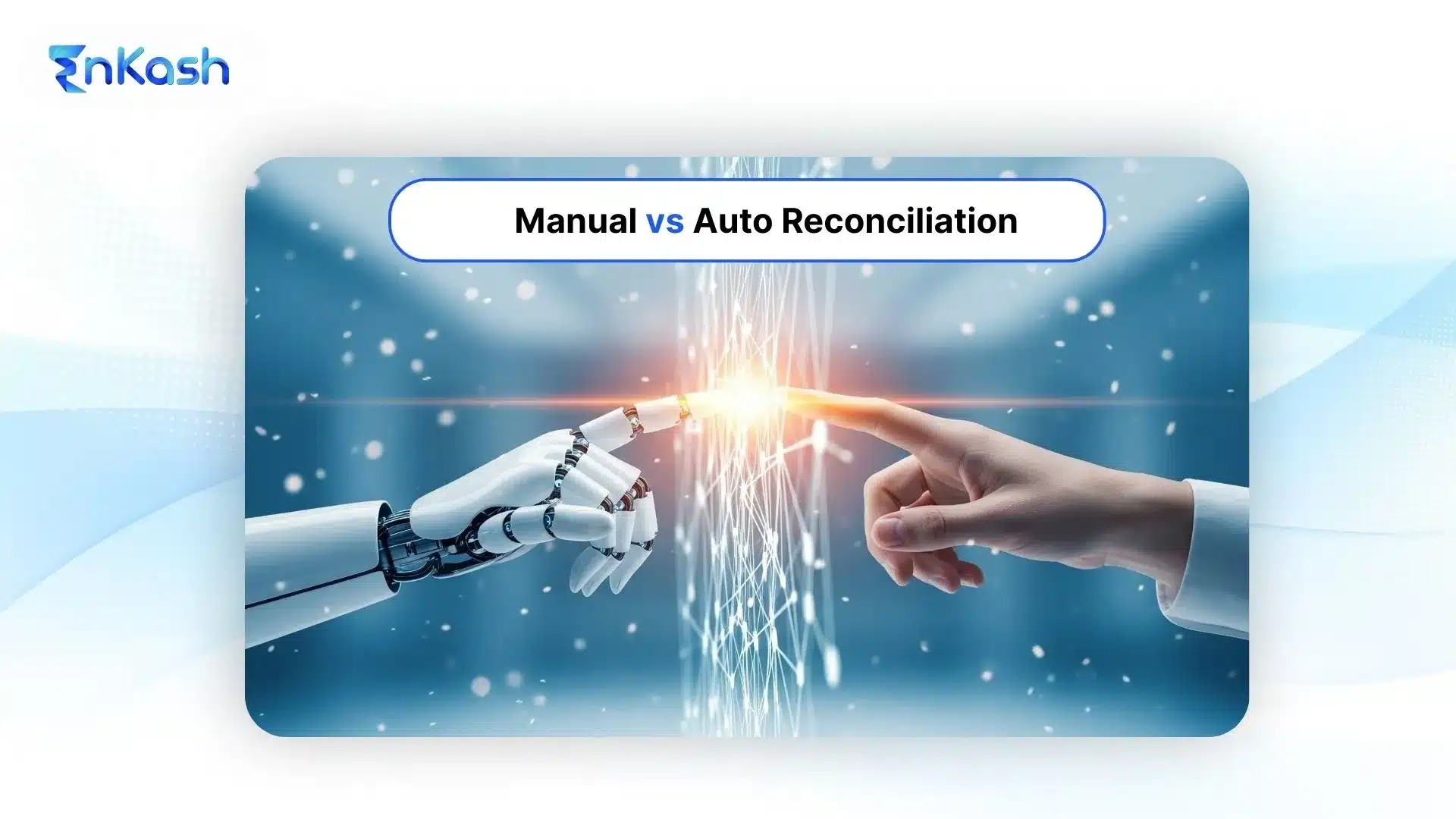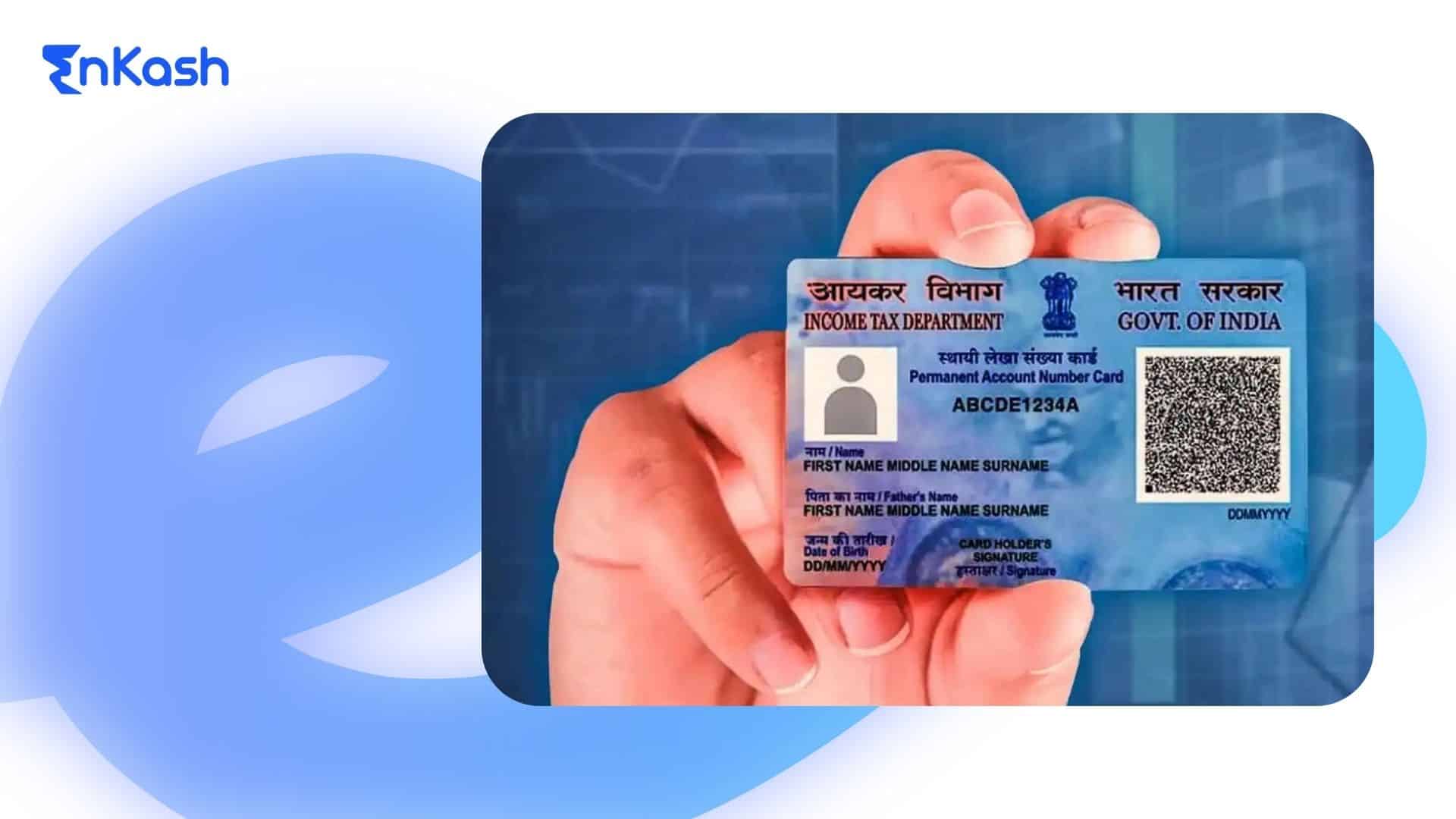Understanding Reconciliation in Accounting
Defining Reconciliation
What is Reconciliation? Imagine two sets of records that should agree, but rarely do at first glance. One set lives inside the company’s books, the other sits with banks, vendors, or tax systems. Reconciliation is the act of comparing those records until the numbers tell the same story.
The reconciliation’s meaning in accounting stretches beyond a basic match. It is proof that entries in the ledger are backed by reality. Every figure must have a source. Every movement of money should trace back to an actual transaction. If that check is missing, balances can drift. A duplicate entry here, an unrecorded charge there, and the accounts begin to mislead. Account reconciliation stops that drift before it becomes a problem.
Why Reconciliation Matters
Accuracy is the heart of trust in finance. Without reconciliations, no manager, auditor, or regulator can rely on the numbers presented. With them, confidence rises because errors are spotted, explained, and corrected.
Think about the risks when records remain unreconciled. Vendors press for payments already made. Customers get calls for dues that no longer exist. Tax filings show claims that cannot be defended. Each mistake costs time, goodwill, and sometimes money. Regular reconciliation prevents these cracks from spreading.
But there is a wider benefit. Reliable figures shape better decisions. A cash flow forecast drawn from reconciled balances is far more useful than one built on guesswork. Leaders who rely on reconciled accounts negotiate more confidently, plan expansions more safely, and measure performance more accurately. Define reconciliation in this way, and it is clear that it underpins not just bookkeeping but strategy itself.
Reconciliation in Daily Business Operations
Look closely and reconciliation appears everywhere. Take bank reconciliation, the finance team compares the company’s cash book with the bank’s statement. At first, mismatches appear. Some deposits have not been cleared yet. A cheque is still outstanding. The bank has added charges that the ledger does not show. Reconciliation explains these gaps and aligns the two records.
Vendor reconciliation tells a different story. Suppliers share statements of accounts, and the business compares them against its own records. A missing invoice, an overlooked credit note, or an overstatement — all get uncovered here. The same principle works with customers.
Payments received must tie back to invoices issued. Without this step, a company risks chasing clients for money it has already collected.
Intercompany accounts bring their own challenges. Each entity records transactions with another, and those records must balance before group accounts can close. Payroll reconciliations confirm that gross pay, deductions, and contributions agree with registers and statutory filings. Fixed asset reconciliations check whether depreciation, disposals, and additions are correctly tracked against the general ledger.
And then comes tax. GST reconciliation is a discipline in itself.
Businesses compare their purchase register with the Input Tax Credit reflected in system-generated statements. If supplier filings are missing, the credits vanish. The result is higher tax outflow and disputes that could have been avoided. Frequent reconciliation ensures credits claimed are valid and compliant.
Each of these examples proves the same point: reconciliation is not an occasional task, it is the checkpoint that keeps every process steady.
Building a Culture of Reconciliation
The impact deepens when reconciliation becomes routine. Daily checks for cash, monthly reconciliations for payables and receivables, quarterly reviews for smaller accounts; each frequency serves its purpose. Spread across the year, reconciliations reduce surprises during audits and filings.
Strong processes also depend on accountability. Each reconciliation needs a preparer and a reviewer. That second layer ensures mistakes do not slip through. Equally important is documentation. Attaching statements, notes, and explanations creates an audit trail that can stand up months or years later.
Seen in this light, account reconciliation is not a dull exercise buried in finance routines. It is the discipline that makes books reliable, audits smoother, and leadership confident. From bank reconciliation to GST reconciliation, every comparison holds the same promise: clarity, control, and a record that can be trusted.
Types of Account Reconciliation
Bank Reconciliation
Every business begins here. Bank reconciliation is the most familiar type, the act of matching a company’s cash book with the bank’s records. At first, they rarely align. Deposits are waiting to clear, cheques have not been presented, or the bank has levied fees the company has not recorded yet. Reconciling those differences ensures the cash position in the ledger reflects the real balance available for use. Without it, leaders may think funds exist when they do not.
Vendor Reconciliation
Suppliers maintain their own view of transactions. They issue monthly or quarterly statements that show invoices raised, payments received, and credits pending. Account reconciliation at this level means comparing the vendor’s list with the company’s purchase register. Missing invoices, duplicate charges, or unadjusted credit notes surface here. Sorting them quickly keeps vendor relationships steady and prevents disputes over balances.
Customer Reconciliation
Customers deserve equal attention. Reconciliation in receivables ensures that payments collected are tied to the correct invoices. A business might mark a bill as unpaid while the customer has already cleared it. Reconciliation resolves the mismatch. It also helps identify bounced cheques, short payments, or unapplied credits before they cause friction in customer communication.
Intercompany Reconciliation
Groups with multiple entities face another challenge: intercompany balances. One entity records a receivable, the other a payable. Unless both sides agree, consolidated accounts remain distorted. Regular intercompany reconciliation clears these mismatches. It also reduces adjustments during statutory reporting, when auditors demand clarity in cross-entity transactions.
Payroll Reconciliation
People rarely think of payroll as needing reconciliation, yet it does. Gross wages, deductions, and statutory contributions must align with both internal registers and compliance filings. Errors here affect employees directly and may attract penalties. Payroll reconciliation ensures what staff receive matches what the company reports and pays out to authorities.
Fixed Asset Reconciliation
Assets need careful tracking. The fixed asset register lists additions, disposals, and depreciation. The general ledger must carry the same information. Fixed asset reconciliation ties the two, confirming that every capital item is properly recorded, depreciated, or written off. This keeps the balance sheet accurate and prevents overstating asset values.
GST Reconciliation
Tax compliance relies heavily on reconciliation. GST reconciliation involves comparing purchase records with the Input Tax Credit reflected in auto-drafted statements. If supplier filings are missing or mismatched, credits can be denied. Reconciling these records early ensures credits claimed in returns are valid. It also highlights vendors whose delays or errors affect the company’s tax position.
Manual Reconciliation: Process, Benefits, and Challenges
Manual Reconciliation Process
The Manual Reconciliation Process begins with collecting records, bank statements, vendor reports, customer ledgers, purchase registers, and tax filings. These are usually drawn into spreadsheets. Then starts the painstaking comparison. Each entry is checked against its counterpart: dates, invoice numbers, amounts, and descriptions.
When something does not match, the team hunts for answers. Is the issue timing? Was an invoice missed? Did a payment slip through unrecorded? Exceptions are noted, grouped, and reviewed. Once explained, adjustments are passed, journals updated, invoices corrected, or supplier credit notes added. Only then can the reconciliation be closed and documented with workpapers.
Though it looks like routine, manual reconciliation demands skill. Analysts decide which mismatches to resolve now and which to leave for the next cycle. They balance accuracy with practicality, and that judgment makes the process work.
Benefits of Manual Reconciliation
- Manual reconciliation has its own merits. Here are the key benefits:
Low setup cost: No additional software needed; spreadsheets and statements are enough. - Flexibility: Templates can be tweaked, notes added, and exceptions handled in unique ways.
- Learning ground: New accountants gain a clear view of how transactions flow and where errors appear.
- Useful for rare cases: Historical balances, old vendor disputes, or one-time checks are easier managed manually.
- Human judgment: Analysts can follow unusual trails that software rules might miss.
Challenges of Manual Reconciliation
The drawbacks surface just as clearly. Here are the main challenges:
- Time-consuming: Large volumes of transactions stretch the process for hours or days.
- Prone to errors: A skipped line, wrong formula, or mistyped figure can distort the outcome.
- Weak audit trail: Spreadsheets and emails do not always show who checked what, or when.
- Scalability issues: As transaction volumes grow, manual methods fail to keep pace.
- Compliance risks: Without strict documentation and reviewer sign-off, gaps appear that auditors can flag.
- Dependence on people: Tired or inexperienced staff may miss issues, leaving balances unresolved.
The Human Factor
Manual reconciliation rests heavily on people. Their concentration, patience, and decisions shape the outcome. Fatigue, distraction, or lack of experience can affect accuracy. These limits explain why many businesses move toward automation as they grow.
Still, manual reconciliation remains relevant. It is the fallback when data is messy, exceptions dominate, or special cases need attention. It is the first safeguard against errors, though not always the most efficient one.
Automated Reconciliation: Process, Benefits, and Challenges
Automated Reconciliation Process
Automation takes the same idea of reconciliation and gives it speed, structure, and scale. Instead of exporting statements and matching them line by line, systems pull data directly from banks, ERPs, payment gateways, and tax portals. Once the files land, the software applies matching rules: invoice numbers, dates, references, and amounts.
When entries align, the system clears them. When they do not, they are flagged as exceptions. Some solutions add a layer of intelligence, suggesting probable matches even if formats differ. Exceptions are then routed to the right person for review. Once resolved, the reconciliation closes with a full log of what was matched, what was adjusted, and who approved it.
Dashboards track the status in real time. Reports show how many accounts are reconciled, how many are open, and how old the exceptions are. For leaders, this visibility is a step change from the scattered spreadsheets of manual methods.
Benefits of Automated Reconciliation
The case for automation is strong. Here are the key benefits:
- Speed: High volumes can be reconciled in minutes rather than hours.
- Accuracy: Rules apply consistently, reducing the chance of human slip-ups.
- Scalability: As transactions grow, systems handle the load without extra effort.
- Audit trail: Every action is logged, showing who matched what and when.
- Visibility: Dashboards highlight progress, exceptions, and overdue items.
- Control features: Role-based access and maker-checker approvals strengthen governance.
- Insights: Exception reports reveal recurring issues in billing, banking, or vendor processes.
Challenges of Automated Reconciliation
Automation is powerful, but not without hurdles. The main challenges include:
- Initial cost: Licensing and implementation demand upfront investment.
- Setup effort: Rules must be designed, tested, and fine-tuned before full rollout.
- Data dependency: Clean master data is essential; errors in setup can multiply downstream.
- System adoption: Teams may resist the shift, needing training and change management.
- Overreliance on rules: Unusual cases still require human judgment, which systems cannot fully replace.
- Integration limits: Not every bank, vendor, or portal has ready connectors, which can slow automation.
Why Automation Changes the Game
Despite these challenges, Automated Reconciliation marks a turning point. It frees finance teams from repetitive tasks and shifts their focus to analysis and insight. Errors are spotted sooner, compliance is stronger, and reporting gains credibility. For businesses handling thousands of transactions a month, automation is not just an upgrade; it becomes the only sustainable option.
Manual vs Auto Reconciliation: Key Differences
Both Manual Reconciliation and Automated Reconciliation serve the same purpose: aligning records and confirming accuracy. Yet the way they achieve it, and the impact on finance teams, is very different. Manual methods depend on human effort, while automation leans on technology and structured processes. To see the contrast clearly, let us break it down point by point.
Key Differences:
| Aspect | Manual Reconciliation | Automated Reconciliation |
|---|---|---|
| Speed and Efficiency | Slow. A single bank account with high volume can take hours to match. | Work completed in minutes or seconds. Teams can focus on exceptions and analysis instead of repetitive matching. |
| Accuracy and Error Reduction | Prone to human mistakes such as wrong formulas, skipped rows, or copy-paste errors. | Applies rules consistently, minimizes errors, and ensures accuracy in every cycle. |
| Audit Trail and Transparency | Spreadsheets and email records can be misplaced; difficult to prove who checked what. | Generates complete logs showing matches, reviewers, and changes. Builds transparency and trust for auditors. |
| Cost and Scalability | Appears cheaper initially since it uses staff time, but costs rise with higher volumes due to more manpower needs. | Requires upfront investment, but scales easily without adding headcount. Long-term economics are favorable. |
| Control and Governance | Relies on reviewer discipline. Missed checks can let errors pass. | Embeds governance features like role-based access, approval workflows, and alerts for overdue tasks. |
| Insights and Visibility | Usually ends with a completed file, no further insights. | Provides dashboards tracking exceptions, recurring issues, and performance metrics, giving leaders actionable insights. |
| Adaptability to Special Cases | Useful when data is messy or one-off cases arise; human judgment plays a role. | Best with structured data and clear rules; less effective with irregular or unusual cases. |
These differences explain why many organizations continue using a mix of both methods. Manual reconciliation remains valuable for unique or complex cases, while automation provides speed, consistency, and scale. Together, they cover the full spectrum of reconciliation needs.
GST Reconciliation in Practice
Role of GSTR-2B and GSTR-3B
In the world of indirect taxes, GST reconciliation holds special importance. Businesses record purchases in their own books, but the system generates its own view of eligible Input Tax Credit. That view arrives in the form of GSTR-2B, an auto-drafted statement that collects data filed by suppliers. If an invoice does not appear here, the credit is blocked.
Then there is GSTR-3B, the summary return where liabilities and credits are actually claimed. Linking the purchase register to GSTR-2B, and then confirming that the credits flow correctly into GSTR-3B, is what keeps compliance tight. Without this three-way match, companies risk losing credits or facing disputes during audits.
How the Invoice Management System Changed the Process
A newer layer has been added with the Invoice Management System (IMS). Instead of passively accepting whatever suppliers report, buyers now get a chance to review. They can accept invoices, reject them, or mark them as pending before they appear in the 2B statement. This step matters. Accepting an invoice confirms the credit, rejecting it signals an error to the supplier, and pending status buys time until clarity comes.
IMS reduces surprises. In the past, missing or wrong supplier filings could leave buyers scrambling. Now, with early visibility and action buttons, disputes shrink. It also gives finance teams more control, aligning their purchase records with system data well before filing deadlines.
Why Automation is Critical for GST Reconciliation
Manual checks are possible, but the scale is brutal. A medium-sized business may deal with hundreds of invoices each month. Matching them one by one against GSTR-2B and GSTR-3B is slow and error-prone. Automated reconciliation makes this manageable. Systems pull the purchase register, fetch auto-drafted statements, and highlight mismatches instantly. Exceptions are categorized, flagged, and sent to the right person.
The benefit is two-fold. Credits are claimed with confidence, and compliance risks fall sharply. GST rules evolve, but one truth remains: automation gives businesses the speed and accuracy needed to keep up.
How to Automate Reconciliation
Steps for Transition
Shifting from manual work to account reconciliation automation starts with discipline. First, standardize data across ledgers, banks, and tax records. Without clean input, automation fails—next, design matching rules: invoice number, date ranges, amounts, or even text-based references. Test them in a pilot before scaling across accounts.
Exception Management
Automation is not only about matches. It thrives on how exceptions are handled. Build taxonomies, timing gaps, duplicates, missing documents, and assign owners for each. Use workflows that route mismatches to the right team member, with deadlines attached. When this framework sits inside software, reconciliations shift from chaotic firefighting to a steady, predictable cycle.
Conclusion: The Future of Reconciliation
Reconciliation has always been about trust. When books and external records agree, businesses move with confidence. When they do not, everything feels uncertain. Manual reconciliation gave companies a starting point, and it still has value in special cases. Yet as volumes rise, errors multiply, and compliance grows stricter, automated reconciliation proves its worth.
The shift is already clear. Finance teams want speed, accuracy, and visibility. Leaders want stronger governance and fewer surprises at audit. Automation delivers on all fronts.
Looking ahead, account reconciliation automation will not just be about clearing mismatches. It will evolve into a continuous control, one that shapes strategy, protects compliance, and gives decision-makers the clarity they need to act without hesitation.
FAQs
Q1. Why is reconciliation important for financial reporting accuracy?
Without reconciliation, numbers tell half-truths. Figures in ledgers may look fine until matched against bank records or supplier accounts. That comparison either confirms accuracy or exposes mistakes. Correcting them protects reporting. It gives managers numbers they can trust and auditors evidence they need before signing off.
Q2. How often should businesses perform account reconciliation?
Not every account needs the same rhythm. Bank reconciliation works best daily or weekly. Vendor and customer balances make sense monthly. Intercompany and fixed assets can stretch longer, sometimes quarterly. Shorter cycles catch errors early. Longer cycles risk surprise adjustments. The balance depends on transaction volume and risk appetite.
Q3. What risks arise if reconciliation is delayed?
Wait too long and mismatches grow teeth. Vendors chase unpaid bills that were already settled. Banks slip in charges that remain unnoticed. Tax credits vanish because claims were not filed on time. Each delay raises the chance of misstated accounts and avoidable disputes. Regular account reconciliation avoids this spiral.
Q4. What documents are required for GST reconciliation?
To complete GST reconciliation, three documents are essential. The purchase register from internal records. The auto-generated GSTR-2B that shows suppliers’ filings. The GSTR-3B returns where credits are claimed. Extra support, credit notes, debit notes, IMS logs, strengthens the evidence. Together, they confirm Input Tax Credit is correct and compliant.
Q5. How does automated reconciliation improve audit readiness?
Auditors dislike chasing emails and broken spreadsheets. Automated reconciliation gives them a clean trail. Every match, every adjustment, every review is logged with time and user stamps. Reports can be pulled instantly. That level of detail shortens audit cycles and shows auditors the system is under control.
Q6. Can automated reconciliation handle partial or fuzzy matches?
Yes. A payment covering multiple invoices, or an entry with half-missing references, throws humans off balance. Automated reconciliation applies configurable rules and tolerance limits to find the likely connection. Instead of endless manual checks, the system suggests matches, leaving finance staff to focus on exceptions that truly need judgment.
Q7. Why is segregation of duties critical in reconciliation?
In account reconciliation, control means dividing responsibility. One prepares, another reviews. Automation enforces it through role restrictions and maker-checker approval. That separation stops one person from pushing changes unchallenged. It keeps reconciliations transparent, prevents manipulation, and reassures everyone that balances reported are supported by independent oversight.
Q8. How does reconciliation impact cash flow management?
Cash feels slippery without reconciliation. A business might believe it has funds, only to discover pending cheques or missing receipts. By reconciling receivables, payables, and bank accounts, account reconciliation gives clarity. Forecasts become sharper, suppliers are paid on time, and management avoids surprises that drain liquidity.
Q9. What challenges are unique to intercompany reconciliation?
Two entities, one transaction, two versions of the truth. Timing lags, exchange differences, and mismatched documents plague intercompany accounts. If not fixed, consolidated statements turn unreliable. Frequently it clears these mismatches, and automation speeds the tie-out. Without it, group reporting becomes a last-minute scramble that rattles auditors.
Q10. How do reconciliation practices evolve as businesses grow?
Small companies rely on spreadsheets and late-night manual checks. Growth changes the landscape. Volumes overwhelm people, and errors slip through. At that stage, account reconciliation automation becomes the backbone of the process. Rules, dashboards, exception workflows, these transform it from a month-end chore into a continuous control shaping strategy and compliance.








